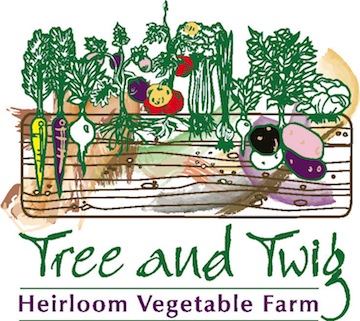Miscellaneous Seeds
- Aunt Molly's Ground Cherry (Physalis pruinosa
Ground cherries were recorded as early as 1837 in Pennsylvania. This outstanding Polish variety is prized for its clean flavor. Fruits are 1/2 to 3/4" in diameter and are encased in a papery husk that turns brown when the fruits ripen. Stores 3-4 weeks in the husk. Extremely productive plants have a sprawling habit and grow 18" tall and 24" wide. Excellent citrus flavor, can be used for preserves, pies, over ice cream or in fresh fruit salads. Starts fruiting by the end of July and continues until frost and a little beyond, extremely productive. 70 days. 50 seeds. - Cape Gooseberry (Physalis Peruviana)
I got my original seed for this from Kokopelli in France. Larger than ground cherries (physalis pruinosa )this husk fruit has a totally different flavour. Tart and tropical tasting, I love this one. Bright orange fruit. Tall plants produce late in the season.100 days. 50 seeds. - Garden Huckleberry (solanum melanocerasum)
Native to western Africa. Sprawling 3-4' branched plants produce hundreds of round 1/2-3/4" shiny berries in clusters. Best when picked after berries turn from glossy to dull black. Tasteless when raw and unsweetened, but makes delicious mock blueberry pies and preserves. Use about 1 lb of berries to 1/2 cup sugar for best flavour. Good for freezing and canning. It is a common misunderstanding that Garden Huckleberries are poisonous. Garden Huckleberries are not poisonous! 50 seeds. - Jelly Melon – aka Kiwano Melon
A very unusual fruit, grows on a rambling vine, initially green and oblong with very sharp horns, if you will. When ripe it turns a brilliant orange and it will ripen very slowly when picked green. Flesh is a brilliant chartreuse green, of jelly consistency. Taste is initially of mild cuke, then tropical fruit-like, banana. 25 seeds. - Morelle de Balbis
Terribly unusual, or is it terrifically unusual! A terrifically spiny plant, dangerously thorny, which produces brilliant red, very seedy, good tasting fruit. A thorned husk pulls completely back when the fruit is ready. Taste? Perhaps a cross between a gooseberry and cherry? You be the judge. Annual plant, but does withstand some freezing weather. 25 seeds. - Salinas Valley Tomatillo (Physalis Ixocarpa)
I collected seed for this large fruited green variety from a farmers market in California. I have been selecting for larger fruit, but there may be some variation. Very useful in Mexican cuisine and so simple to grow. 90 days packet. 50 seeds. - Solanum Atropurpureum
This plant is not edible. A very, very different plant, black purple stems with huge thorns on the stems and leaves. Produces small bunches of berries that turn a golden colour in the fall. Makes quite a statement in the garden. 120 days. 50 seeds. - Wild Tomatillo (physalis philadelphica)
I originally obtained this seed from France. It is a much smaller version of the tomatillo and a terrifically prolific producer. Used in the same way as tomatillos and said to have a finer flavour. You be the judge! 90 days. - Okra – Burgundy
This is a fun to grow and eat plant that requires a long warm season. Entirely possible for us here in Southern Ontario. Likes to germinate in warm soil but can be started earlier indoors and carefully transplanted out. Tall plants, with lovely creamy yellow hibiscus-like flowers. Red pods should be picked small. 50-60 days.
Swiss Chard
Culture: A fabulous year-round alternative to spinach, it just keeps growing and growing. Seed as early as soil can be worked. For large size leaves, plant seed 5-6" apart, for salad leaves, 2" apart. Rows 24" apart. Enjoys compost feeding and regular watering. 100 seeds.
- 5 Colour Silverbeet
Thompson & Morgan offered Rainbow Chard from 1970 through 1989 and then dropped the variety after the number of colors began to decrease. Fortunately, Digger's Garden Club in Australia still maintains a nice selection. Re-selected strain. Seed crops of all the different colors grown in isolation to maintain a proper balance of colors. 50-60 days. Certified Organic. - Rhubarb
Deep crimson stalks and leaf veins contrast sharply with dark green, heavily crumpled leaves. First introduced to U.S. gardeners in 1857. 50-60 days.
